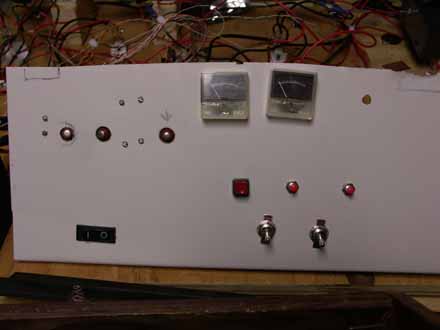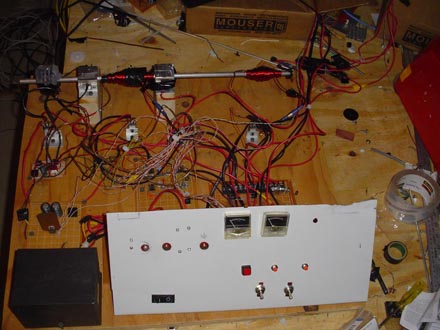|
A coil gun works completely off of
electromagnetism. The principle is that
a coil of wire or any conductor of electricity which has current flowing
through it will generate a magnetic field. This is known as the Lorenz effect. It is what is used to drive electric motors. However in the application of a coil gun the energy transferred
by the Lorenz effect is linear and not rotational. In a working example the wire or coil would be wrapped around a
barrel. A ferrous projectile would be
placed at one end of the barrel. When
current begins to flow through the coil the projectile will accelerate toward
the center of the field. Once it gets
there, optimally, the current will stop flowing and the projectile will continue moving only by its own inertia. Currently the coilgun will shoot clean through a soda can.
The coil gun makes very little noise when it is fired, it shoots a 3/16 by 2 steel rod tappered in the front with a streamer on the end to help it fly straight, as rifling the barrel is not feasable. The firing procedure is to turn the master power on, turn the saftey switches to safe and press the first charge button to charge the first bank. The saftey switch disconnects the triggering circuit, as it is sensitive to false triggering by inducted current, this current usually comes from the sparking when we begin to charge a capacitor bank. After all banks are charged (we try not to exceed a charge voltage of 400 volts) the saftey switches are turned on and the square red button is used to fire the projectile. If one of the capacitor banks did not discharge by means of the optical trigger the manual fire switches are used to discharge them. The biggest problem with the coilgun is the low energy coupling, ie the amount of energy in the capacitor banks is many times as great as the energy that the projectile carries. I may have a calculations page in the future to find our effiecncy, however the most effiecent coil guns are only on the order 30%.
Electronics
Pictures
Test Fire movie |


|